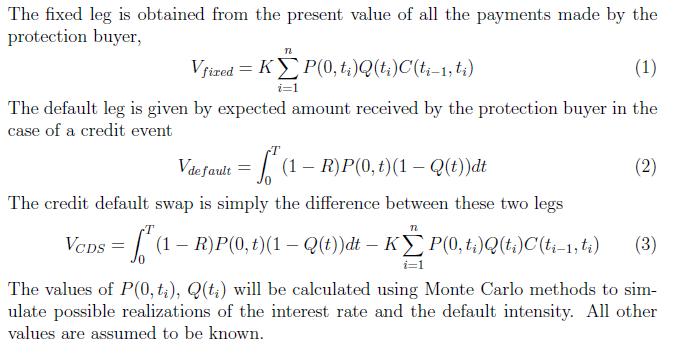Contents
Price Armstrong specializes in securities law and consumer fraud protection. We have expertise in representing whistleblowers in their actions against institutional malpractice, and have the knowledge to partner with you through this somewhat unnerving journey. Some legal experts are concerned this is the first break in dismantling the Whistleblowers Program altogether. The Whistleblower Program not only guarantees anonymity to the whistleblower, but an incentive to report wrongdoing, provides a reward for specific, timely, and accurate information about violations of securities rules.
Every investment carries some degree of risk, and investments yielding higher returns typically involve more risk. Due to his success in the postage stamp scheme, investors were immediately attracted. Instead of actually investing the money, Ponzi just redistributed it and told the investors they made a profit.
- The con artist pays the high returns promised to their earlier investors by using the money obtained from later investors.
- You figure out that your $144 investment earning 25% a month will be worth $1,676.38 after a year and leave your money there.
- Once the trust of investors has been fully gained, the orchestrator must meet this trust with the promised payments.
- Once the Ponzi scheme has collapsed, recovering funds can be extremely difficult—especially if all the funds were paid out to earlier investors.
- It attracts new investors by promising to reward them with a high rate of return, usually higher than the market return value.
Moreover, the scammers also keep some amount for themselves. The early investors re-invest in the scheme and promote it among family and friends. The investment does not go into any profit-generating options. Instead, it is a fraudulent racket where only a few early investors get their money back. In 1920, Charles Ponzi was found guilty of postage stamp fraud.
Ponzi Scheme – Explained
Either the perpetrator disappears with the invested money, the whole thing collapses when investors try to get their money out, or the government uncovers the fraud and steps in. The risk/reward principal dictates that the higher the return, the greater risk. Historically, a good rate of return is 7-8 percent per year , but some hedge funds boast rates of return as high as 10 percent per month.
“Statements such as ‘no investor has ever lost a single penny of his investment with us’ and ‘we have an unblemished track record of meeting or exceeding the promised profitability’ are common.” Id. at 15. One should be suspicious of any investment https://cryptolisting.org/ that continues to generate regular, positive returns despite the overall market conditions and economic state of affairs. One should also be skeptical of controlled or contrived demonstrations used to prove the business model works.
The most famous modern Ponzi scheme was orchestrated by Bernie Madoff. His firm executed the largest Ponzi scheme in history, defrauding thousands of investors out of billions of dollars over decades. On the other hand, a pyramid scheme recruits other people and incentivizes them to further bring along other investors. A member within a pyramid scheme only earns a portion of their proceeds and is «used» to generate profit by members higher along the pyramid. The SEC has issued guidance on what to look for in potential Ponzi schemes including guarantee of returns or unregistered investment vehicles with the SEC. The Ponzi scheme generates returns for older investors by acquiring new investors, who are promised a large profit at little to no risk.
In South Florida, attorney Scott Rothstein perpetrated an infamous and large Ponzi scheme. Rothstein was a prominent lawyer and managing partner of a large South Florida law firm who won the trust of wealthy investors. His scheme essentially sold bogus legal settlement agreements to investors. His purported law clients wanted immediate discounted lump sum payments instead of waiting to receive their full lawsuit settlements in installments over many years.
Now you are ready to invest it wisely and reap the financial rewards of your labor and sacrifices. Beware, not all investments have your best interests at heart. There are many con artists out there scheming to get your hard earned money through a variety of scams and well-crafted Ponzi schemes. Sometimes even the most cautious investors can be victims. Often the elderly are at risk to these investment schemes featuring high income or high yield investments. Education is not only power when dealing with scammers but it is also safety and reassurance.
What Is the Most Famous Ponzi Scheme?
The SEC and CFTC bring actions against perpetrators of both Ponzi and pyramid schemes, and whistleblowers are essential in catching this kind of fraud. The essential difference between the two frauds is that a Ponzi scheme generally only requires investment in something from its victims, with promised returns at a later pay date. Madoff promoted his Ponzi scheme as an investment strategy called the split-strike conversion that utilized ownership of S&P 100 stocks and options. Madoff would use blue-chip stocks which have highly accessible historical trading data which he could back into to falsify his records.

One should be suspicious of the use of prestigious company “ames like Washington, Lincoln, Standard, Chartered, First, Security” and America, Great and National. The National Association of Securities Administrators also provides a helpful podcast on how to spot Ponzi schemes. Go to Consumer Alerts The Attorney General provides Consumer Alerts to inform the public of unfair, misleading, or deceptive business practices, and to provide information and guidance on other issues of concern. Consumer Alerts are not legal advice, legal authority, or a binding legal opinion from the Department of Attorney General. Go to Human Trafficking The Michigan Attorney General is leading the fight against this horrific crime by prosecuting the state’s first-ever criminal cases under state law banning human trafficking in Michigan.
As the number of total investors grows and the supply of potential new investors dwindles, there is not enough money to pay off promised returns and cover investors who try to cash out. A Ponzi bubble bursts when the con artist simply cannot keep up with the required payments. In many cases, the perpetrator has spent investment money on personal expenses, depleting funds what is pura and accelerating the bursting of the bubble. Ponzi scheme, fraudulent and illegal investment operation that promises quick, easy, and significant returns on investments with little or no risk. The second group, in turn, is paid with funds obtained from a third group of investors, and so on until the number of potential investors is exhausted and the scheme collapses.
Origins of the Ponzi Scheme
However, Ponzis scheme was not the first of its kind, and unfortunately, nor was it the last. Sarah Howe had used a similar tactic to swindle Boston women in the later part of the 19th century. The Ponzi scheme is a type of chain referral recruiting system in which the victims are sold the right to sell others a specified product.
In fact, the methods of what came to be known as the Ponzi Scheme were described in two separate novels written by Charles Dickens, Martin Chuzzlewit, published in 1844 and Little Dorrit in 1857. Companies that engage in a Ponzi scheme focus their energy into attracting new clients to make investments, otherwise their scheme will become illiquid. The amounts that investors thought they had were never attainable in the first place. The wide gap between «money in» and «fictitious gains» make it virtually impossible to know how much was lost in any Ponzi scheme. Con artists are only limited by their imagination, and different schemes continue to be uncovered on a regular basis. Silver Law Group frequently represents victims on a contingency fee basis.

Today, many new Ponzi scheme cases involve cryptocurrencies. Charles Ponzi told his first investors that he would pay them approximately $150 for every $100 they lent him, every 45 days. Ponzi told investors he could generate this incredible 50% return using arbitrage. Between the years 2008 through 2013, the average size Ponzi scheme involved approximately $98 million.
Ponzi Scheme SEC Whistleblower Lawyers
The early investors sit on the top of the pyramid, whereas new investors pay a fee to the early investors to gain access. A Ponzi scheme is a deceitful act where an organizer traps investors into a fake investment plan. The fraudster claims huge returns within a short period with minimal or zero risk. Check the auditor, or ask your financial adviser to check the auditor of any fund or company for you. Auditors sign and certify financial statements of companies and investment funds. Investors rely on these audit reports since auditors are liable for inaccuracies.
The Ponzi schemes are illegitimate and unregistered investment schemes. Be suspicious if you do not receive a payment or have difficulty cashing out. Ponzi scheme promoters sometimes try to prevent participants from cashing out by offering even higher returns for staying put. Jonathan Kurta was able to recover over $9.3 million for a group of defrauded investors.
Since December 2008, Bernie Madoff’s name has been synonymous with Ponzi schemes. At the time of his arrest, he had stolen billions of dollars from tens of thousands of investors—one of the biggest Ponzi schemes in history, spanning approximately 17 years. Investors are still recovering from their enormous losses.
If you «cash out» at this point, the fund manager can send you your $144, taken from the money your friends invested, and still have $456. Because the investment appears to pay out as it should, no flags are raised. If the company is properly registered, you should be able to find the company in the Division’s online database or the SEC’s Edgar database. If the company says it is exempt, they should be able to provide you with a legal citation of the law that they are relying upon for exemption. If they cannot, the security is likely illegitimate and you should not invest.
He is rated 10 out of 10 by Avvo, was recognized by Washingtonian magazine as a “Top Whistleblower Lawyer” in 2015 and selected by his peers to be included in The Best Lawyers in America® and in SuperLawyers. “Guaranteed” returns—as much as 20% per annum, or even per month. To put that into absurd claim into perspective, Warren Buffet has averaged a 20% return over the past 15 years. Secrecy and not providing complete information about how they give such a high rate of return.
Rothstein said his clients wanted their money now and did not want to wait. With this desire, the clients were willing to accept a large discount from their full settlement amount to get a large lump payment now. He used monies from newer investors to maintain his high lifestyle and pay earlier investors a purported return on their investment. For potential investors, Rothstein told them that they could not examine the settlement agreements for due diligence because the agreements were legally confidential.

